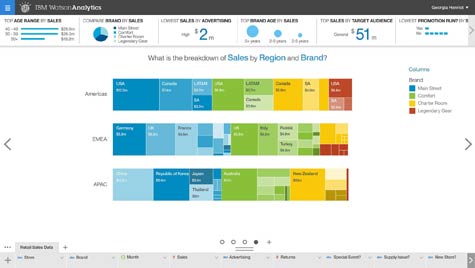Looking to make analytics capabilities enabled by a supercomputer available to the average business user, IBM today announced a Watson Analytics service that provides access to a range of predictive and cognitive analytics applications. The Watson Analytics service leverages the speech recognition capabilities of the IBM Watson platform and is designed to allow business users to self-service their own analytics using natural language.
Eric Sall, IBM vice president for business analytics, says Watson Analytics leverages IBM Bluemix cloud services running on the IBM SoftLayer cloud to provide business users with a full range of visualization and analytics applications that they can directly invoke without requiring assistance from the internal IT organization.
Hoping to spark the emergence of a new “Bring Your Own Analytics” era, Sall says IBM is trying to make advanced analytics much more accessible to end users. Prior to the launch of Watson Analytics, organizations needed help from their internal IT organization to build and deploy analytics applications. Watson Analytics eliminates that requirement in a way that gives end users direct access to advanced analytics that can be used to make more informed business decisions.
In the future, Sall says that IBM will also offer application programming interfaces that will allow developers to more easily invoke the Watson Analytics service in addition to the IBM Watson platform.
Sall says that while there’s still value to be gained by investing in Big Data analytics applications that run on premise, the cost associated with developing advanced analytics applications that can take advantage of IBM Watson is beyond the budgetary reach of the average organization. Making Watson Analytics available as a service allows those organizations to take advantage of text analytics to make better business decisions, Sall says.
Sall adds that many business executives today take certain assumptions to be business gospel, when further analysis would make it apparent that the trends that created those assumptions are far more nuanced than they initially appreciated.
Big Data analytics as a service will probably be the medium through which most end users wind up engaging with advanced analytics applications in the age of the cloud. In fact, the primary analytics challenge going forward may not be finding the right answers at all, but rather understanding which questions are actually worth asking.




